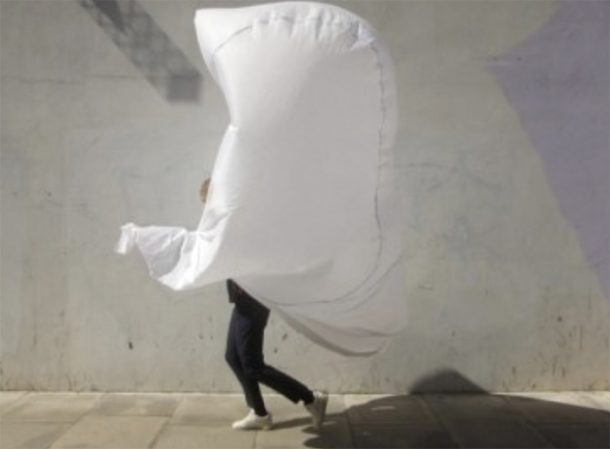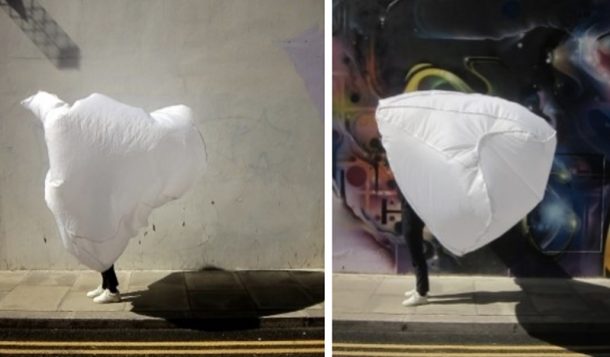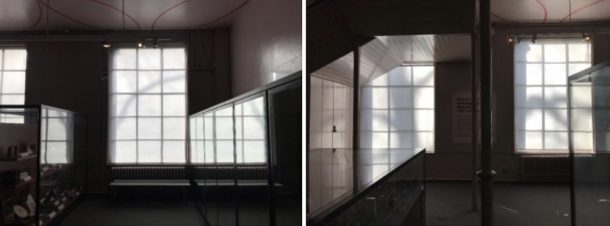
The lockdown has fundamentally changed our local communities. We rediscovered our parks; new and old digital communities were popping up everywhere. But what effect will these new ‘corona bubbles’ have on society longer term? Will they bring us together, or isolate us further?
I am an architect who specialises in museum and community projects. As a V&A Museum of Childhood designer-in-residence, I am interested in the exploration of outdoor play and reimagined traditional street games, looking to connect the museum with the public through the process of making and play. Lockdown and Covid measures have changed the way young people engage with public spaces. Play is fundamental to a child’s development, so how might we build these communities of play in a Covid landscape?
The idea of community, in this context, can mean many things, but in principle we can say it’s more influenced by social interaction rather than location. Our cities consist of many different communities. Like giant soap bubbles these communities slide against each other daily on public transport or in public spaces, not always interacting but noticing and accepting one another. What happens when these communities retreat into their own social bubbles?
I am intrigued how museums can be a space to metaphorically burst these bubbles of isolation. Whether online or socially distanced, museums interact with wide ranges of people from different backgrounds and ages. I want to see how we can bring together these different audiences for social interaction.
Trapped in a bubble
My residency at the V&A Museum of Childhood started pre-lockdown with sewing ‘wind machines’ to help young people learning through the process of making. These pieces of fabric can be any shape, with the simple brief that they must interact with the wind when they are played with outside. With participants we ran and played inside and outside the building surprised by the volume of the vessels and the wind powered by our body. It was amazing how so many of these pieces turned into literal bubbles when played with.

One of our aims was to use the wind machines to reach different audiences and interact with new people: it is surprisingly easy to talk with people you don’t know when wearing a wind machine.
During this period, I also explored the museum as a physical space. Fascinated by the low winter morning light trapped by the window blinds, I photographed its playful dance with trees and the reflections making their way inside the gallery. I realised that I was immersed into a museum bubble myself, and was eager to see how this bubble could grow outside into the wider community. I am interested in the transition between inside and outside spaces, which became especially pronounced during lockdown.

With this lens of how physical space influence people’s interaction, I am curious about the transition between street and gallery. How museums, often located right in the heart of our cities can make better use of their generous staircases, wide plazas, hidden courtyards, gardens and outdoor area and become more ‘permeable’?
The lockdown made me think of how parks and gardens were used during World War II to grow vegetables and teach children to garden. It also made me think of the many young people stuck at home desperate to meet up with friends. Despite being out of lockdown, our schools and classrooms are still fragile environments. How can museums work across these different audience bubbles, at a time of necessary isolation, to build communities?
Museum spaces
What makes a museum resilient and relevant across different audiences? Does it require a physical space for interaction? Or is it about facilitating an atmosphere through programming events in which different groups feel ownership? The Covid-19 recovery could be an opportunity for experimenting a new hybrid use of indoor and outdoor museum spaces.
As I re-start my residency, some of the pre-lockdown wind machines have collided and burst into each other. In one way, they have transformed themselves into one collective bubble that just needs creativity to make it work. A canopy, a flying carpet, a curiosity cloud, a shelter or an outdoor classroom, designed and stitched together from pieces recalling the Museum of Childhood’s mosaic floor.
Just as the children were on an open-ended journey creating wind machines, I am seeing how I can continue to use these pieces to bring the museum outside, to explore spaces, and watch this (socially distanced) waltz of bubbles move together throughout our community.
This residency is supported by the Danish Arts Foundation.
Learn more about Anne Marie’s work and workshops on her website.
Follow her on Instagram.


